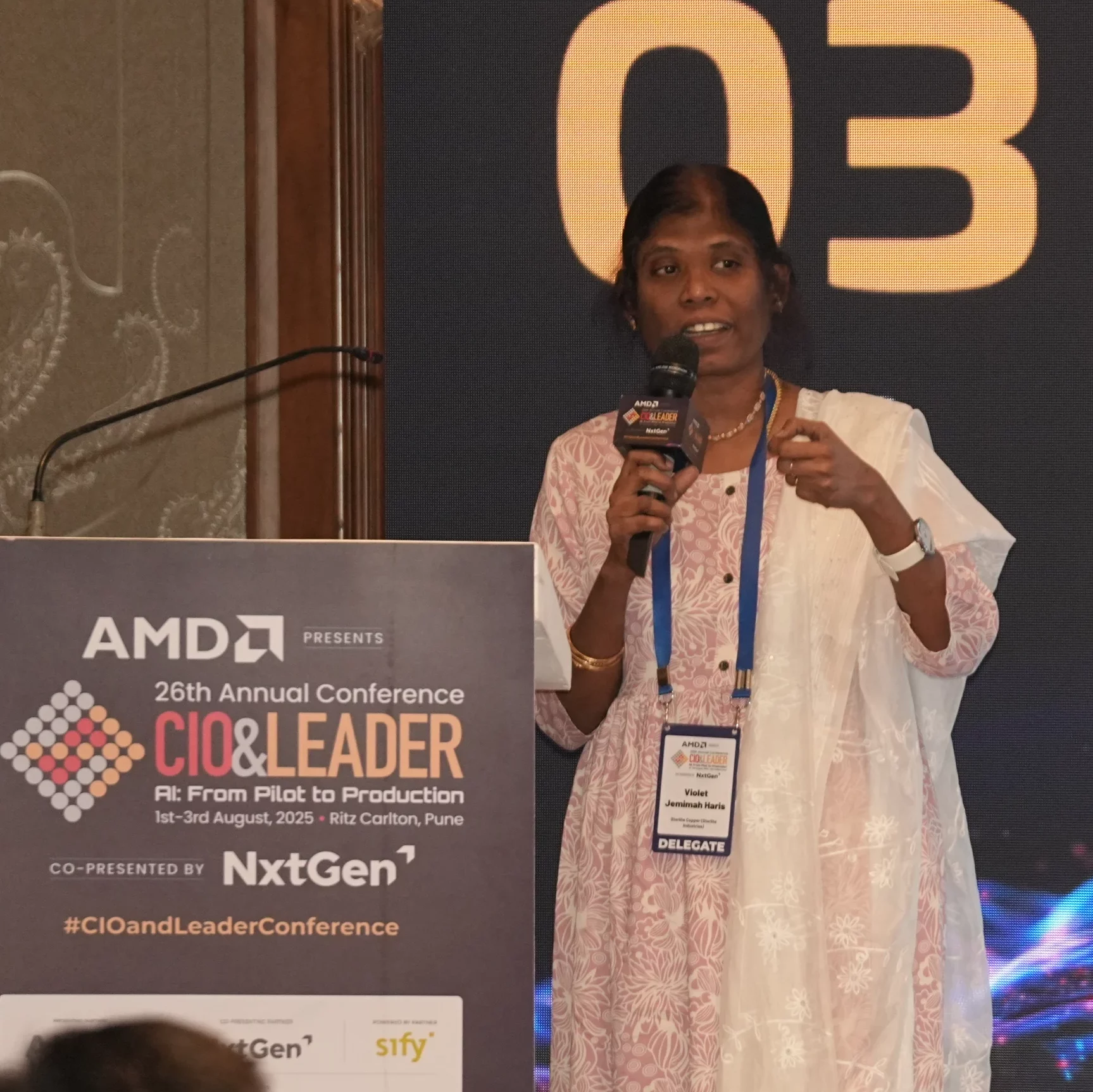Violet Jemimah Haris, Chief Digital and information officer at Sterlite Copper from STL Digital Limited driving digital Intelligence to transform manufacturing, operations, sustainability, and growth

In a world where manufacturing is no longer just about machines but about intelligence, Violet Jemimah Haris, Chief of IT and Digital at Sterlite Copper, captured the essence of the industrial future in her keynote: “Artificial intelligence isn’t just a tool, it’s the nervous system of tomorrow’s factories.” With three decades of experience, including two decades in manufacturing and a decade in IT, Haris brought clarity and conviction to how AI can transform industries from being reactive to predictive, from manual to intelligent, and from incremental growth to exponential impact.
The New Metrics of Success: Volume, Cost, and Turn around time reduction
At the heart of Violet JemimahHaris’s address was a simple but powerful framework: AI in manufacturing thrives on three pillars: volume impact, cost impact, and turnaround time. Together, these determine how effectively companies can scale AI while boosting revenues. The future of industrial operations, she argued, is about embedding intelligence into every node of the system from sensors on machines to predictive algorithms that drive boardroom decisions.
Predictive and Prescriptive Maintenance: From Guesswork to Precision
One of the most transformative shifts is happening in maintenance. Haris drew a vivid analogy: “Just as doctors prescribe medicines to sustain human health, machines too need predictive and prescriptive care.” By embedding sensors and implementing condition-based monitoring, manufacturers can forecast when a pump or smelter is likely to fail, plan for replacements, and reduce downtime. This not only reduces maintenance costs but also unlocks reliability as a competitive advantage.
Smarter Supply Chains: Demand Forecasting Reimagined
From production floors to global markets, AI is reshaping supply chains. Demand-sensing tools, Haris noted, help companies understand real-time market shifts and optimize product strategies. Likewise, raw material blending simulations powered by AI ensure higher product yield and customer satisfaction, making supply chains not just faster, but smarter.
The Power of the Digital Twin
Perhaps the most visionary element in Haris’s keynote was her emphasis on digital twins, virtual replicas of physical plants powered by sensor data and machine learning. A digital twin doesn’t just mirror operations; it becomes a living model that identifies inefficiencies, predicts failures, and supports real-time decision-making. “Without sensors and historic data,” Haris explained, “there can be no digital twin.” For her, digital twins are the gateway to scaling plants intelligently, cutting waste, and achieving quality excellence.
Smart Fuel and Sustainable Futures
Cost and sustainability are closely linked. Haris spotlighted innovative fuel models that regulate furnace oil consumption through AI-driven optimization, an ample of saving while reducing emissions. By integrating energy management with carbon footprint analytics, manufacturers can not only improve efficiency but also earn carbon credits, thereby directly tying industrial progress to global climate goals.
Safety, ESG, and Human Intelligence
Beyond efficiency and cost, Haris emphasized ESG, safety, and the role of human ingenuity. From behaviour-based safety monitoring to emission data analytics, AI becomes a guardian of both people and the planet. Yet, she cautioned, AI alone is not enough: “Artificial intelligence may power the system, but it’s human intelligence and 10x thinking that will build the future.”
The Road Ahead: Scaling AI Thoughtfully
The keynote closed on a pragmatic yet inspiring note. Scaling AI isn’t about rushing to adopt every new tool; it’s about integrating platforms systematically, ensuring quality management, and nurturing in-house talent alongside external partnerships. For Violet Jemimah Haris, the real success will be when factories operate as seamlessly in the digital world as they do in the physical, where every decision is data-backed, every machine is self-aware, and every operation is built for resilience.